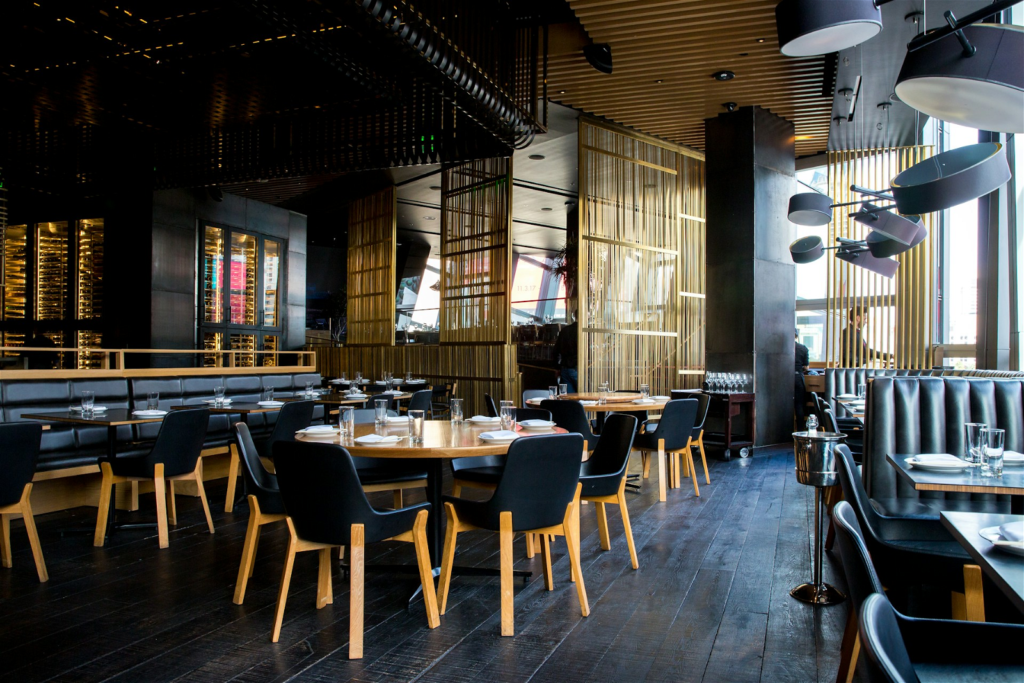Over the ages, restaurant furniture design has changed dramatically to reflect advances in technology, shifting cultural norms, and changes in socioeconomic trends. From the sleek, multipurpose pieces of modern restaurants to the communal tables of ancient civilizations, the history of restaurant furniture is an intriguing one that reflects humanity’s evolution. This piece explores this development, emphasizing significant turning points and the elements that have shaped design preferences.
ANCIENT BEGINNING
Eating was a social activity in ancient societies like Greece and Rome. The furniture in these environments was made with social interaction in mind. Large tables for gatherings were typical, usually constructed of wood or stone. The Greeks emphasized socializing and leisure by using kunai, sofas that diners reclined while dining. On the other hand, the Romans brought more symmetrical eating pieces, such as multi-person tables and hardwood seats. These early, functionally basic designs prioritized the communal element of meals and durability.
MEDIAEVAL PERIOD
In Europe, dining furniture remained functional during the Middle Ages. Like furniture for the home, restaurant furniture was designed with durability and utility in mind. Many heavy wooden tables and benches were usually made of oak or other hardwoods. The austere lifestyle of the era was reflected in the furniture’s simplicity and lack of decoration. Furniture in inns and taverns, which functioned as the main places for people and tourists to eat, was made to last a long time and seat big parties.
THE RENAISSANCE
Restaurant furniture benefited from the Renaissance’s heightened emphasis on art and design. This time, there was a noticeable trend towards more elaborate and visually appealing items. Dining furniture represented wealth and prestige with its intricate carvings, inlays, and decorations. Fine materials, including marble, mahogany, and walnut, were increasingly used. Exquisite designs influenced by classical motifs adorned chairs and tables, and comfort began to take precedence over practicality. During this period, dining furniture started to be considered pieces of art in addition to valuable objects.
INDUSTRIAL REVOLUTION
A significant turning point in the development of restaurant furniture design occurred during the Industrial Revolution in the 18th and 19th centuries. The development of mass production techniques made large-scale furniture manufacture feasible, increasing furniture’s accessibility and affordability. During this time, designs became more uniform, with essential, practical items becoming the norm in dining establishments. Efficiency and utility were prioritized, along with simple designs to maintain and duplicate. More people started using metal, especially steel and iron, which produced sturdy furniture.
20TH CENTURY
The modernist style profoundly impacted restaurant furniture design during the 20th century. Modernism strongly emphasized practicality, simplicity, and novel materials like glass, aluminum, and plastic. The designs were simple and elegant, emphasizing geometric forms and clear lines. Modernist design classics that combine comfort and flair, like the Eames chair and Eero Saarinen’s Tulip chair, gained popularity at dining establishments. The fast-food sector also flourished at this time, introducing modular furniture—which could be readily cleaned and reconfigured to suit high customer turnover—to the furniture market.
21ST CENTURY
Technology and sustainability have taken center stage in restaurant furniture design due to the 21st century’s new concerns. Sustainable manufacturing techniques and environmentally friendly materials are becoming increasingly popular as environmental challenges become more widely known. The use of recycled metal, biodegradable polymers, and reclaimed wood in furniture design is growing. In addition, emphasis is placed on producing long-lasting, robust parts with as little waste as possible.
In recent years, technology has also significantly impacted the evolution of restaurant furniture. Seeing brilliant furniture with built-in lighting, charging outlets, and interactive elements like touch displays is becoming increasingly typical. These developments improve the eating experience while appealing to today’s tech-savvy customers. Furthermore, 3D printing and other developments in manufacturing technology have created new opportunities for bespoke and custom furniture designs.






